You can use grips to make direct changes to a part segment in a drawing. Hovering over a grip displays a tooltip describing the grip’s function. Some tooltips also suggest options, such as using the CTRL or ALT keys. For more information, see Designing with Dynamic Input and Grips.
Several types of grips are available:
- Add grips (
 ) add segments, such as duct, pipe, plumbing line, wire, cable tray, or conduit, to a new or existing run without sacrificing connectivity along the run.
) add segments, such as duct, pipe, plumbing line, wire, cable tray, or conduit, to a new or existing run without sacrificing connectivity along the run.

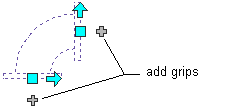
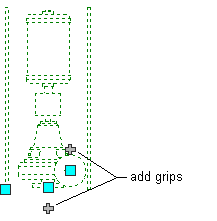
Pipe segment
- Location grips (
 ) move a component in the current XY plane. Location grips appear at the insertion and connector points on a part.
) move a component in the current XY plane. Location grips appear at the insertion and connector points on a part.

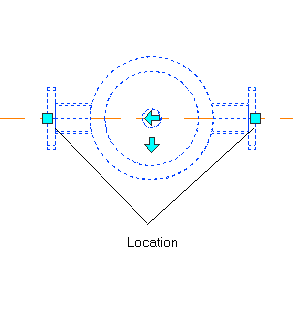
Plumbing
- Lengthen grips (
 ) change the length of a part segment. Lengthen grips use the segment's current orientation to maintain connectivity in the existing run.
) change the length of a part segment. Lengthen grips use the segment's current orientation to maintain connectivity in the existing run.
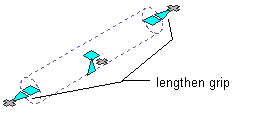
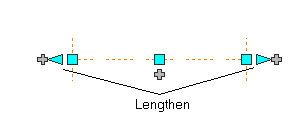
Piping
- Flip grips (
 ) switch the orientation of some parts (such as fittings or takeoffs) based on the direction of the grip.
) switch the orientation of some parts (such as fittings or takeoffs) based on the direction of the grip.
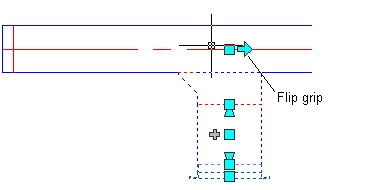
Takeoff selected — Flip grip shown
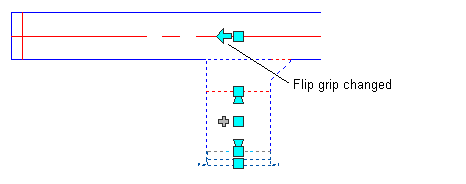
Orientation flipped
- Diamond-shaped rotate grips (
 ) in isometric views rotate an object around its centerline to any angle, if that object has round connectors on opposite ends. Rotate grips are available on parts and fittings that can be rotated without breaking the connection with existing objects.
) in isometric views rotate an object around its centerline to any angle, if that object has round connectors on opposite ends. Rotate grips are available on parts and fittings that can be rotated without breaking the connection with existing objects.
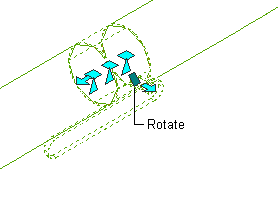
Rotating a damper in an isometric view
- Elevation grips (
 ) modify the elevation of part segments in side and isometric views relative to the top, centerline, or bottom of the segment. Elevation grips appear at the insertion and connector points on the specified part segment.
) modify the elevation of part segments in side and isometric views relative to the top, centerline, or bottom of the segment. Elevation grips appear at the insertion and connector points on the specified part segment.
